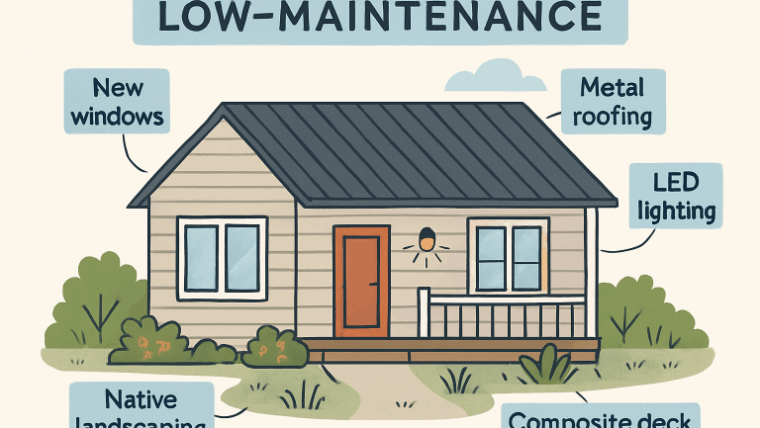
Two similar properties in the same neighborhood list within weeks of each other. One gets multiple offers in days. The other sits on the market for months, eventually selling below asking price. Same area, similar size, comparable condition – yet completely different outcomes.
This happens constantly, and it’s rarely about luck. Properties that sell quickly usually do several things right that slow-selling properties get wrong. The gap between a fast sale and a long slog often comes down to details that seem small but make enormous differences to buyers.
Table of Contents
Price: The Make or Break Factor
Getting the price right isn’t just important – it’s everything. Overpriced properties don’t just sell slowly, they often end up selling for less than they would have if priced correctly from the start.
Here’s what happens: a property lists too high hoping to attract offers. The first few weeks bring viewings because it’s a new listing, but no offers because buyers know it’s overpriced. After a while, viewing requests drop off. Eventually, it’s “that property that won’t sell” and buyers assume something’s wrong with it. When the price finally drops, it often goes below what it would have achieved if priced sensibly from day one.
Buyers watch properties. They see price reductions and smell desperation. A property priced right from the start creates urgency. Multiple interested buyers drive competition and often push the final price above asking. Overpricing kills that dynamic completely.
The emotional difficulty is that sellers want to “try” a higher price and drop if needed. But that strategy costs time and money. The best buying interest comes in the first couple of weeks of listing. Miss that window with bad pricing and you’re fighting uphill the entire time.
First Impressions Start Online
Most buyers decide whether to view a property within seconds of seeing the listing photos. Bad photos kill sales before anyone sets foot through the door.
Phone photos with poor lighting, odd angles, or cluttered rooms don’t work. Neither do photos that make rooms look dark, small, or uninviting. Professional photography costs relatively little but can mean the difference between strong viewing interest and barely any.
The same applies to descriptions. Generic text that could describe any property – “charming home in popular area” – does nothing. Descriptions need specific details that help buyers picture themselves there. What’s the kitchen like? Where does morning sun come through? What makes the garden special?
Working with Cardiff property sales specialists often means getting professional photography and compelling descriptions as standard, which immediately puts properties ahead of poorly presented competition.
Condition and Presentation Matter More Than You Think
Buyers form opinions fast. Walking into a property that smells musty, looks tired, or feels neglected creates an immediate negative impression that’s hard to shake. Even if the bones are good, the emotional response matters.
This doesn’t mean expensive renovations. It means the property looks cared for. Fresh paint in neutral colors. Clean carpets or floors. Gardens that aren’t wildly overgrown. Kitchens and bathrooms that might not be modern but are spotlessly clean.
Decluttering makes a huge difference too. Personal photos, collections covering every surface, and rooms stuffed with furniture make spaces feel smaller and harder for buyers to imagine as their own. The goal is to let buyers see the property, not your life.
Some sellers resist this, thinking buyers should see past cosmetic issues to the property’s potential. But most buyers can’t or won’t. They’re comparing your property to others on the market that are clean, neutral, and ready to move into. Why would they choose the one that needs work?
Timing and Market Awareness
Properties listed when buyers are actively looking move faster than those listed at quiet times. Spring typically sees more activity than December. Listing just before a school holiday might work well for families. Going on the market when several similar properties already sit unsold in the area creates more competition for buyer attention.
Understanding local market conditions matters too. In a hot market with low stock, properties sell fast, almost regardless. In slower markets, only the best-priced, best-presented properties move quickly. Reading the market correctly helps set realistic expectations and strategy.
Some sellers wait for the “perfect time” that never comes. Others rush to list without preparation. The sweet spot is listing when you’re genuinely ready – property in good condition, price set right, quality marketing prepared – and when the market has decent activity levels.
Flexibility With Viewings
Properties that accommodate viewing requests easily get more interest. Sellers who make viewings difficult – narrow time windows, requiring lots of notice, canceling frequently – create barriers that buyers simply avoid by looking at other properties instead.
The reality of selling is that your schedule temporarily matters less than buyer schedules. People view properties when they have time – evenings, weekends, sometimes at short notice. Making yourself available shows buyers the property, which is the entire point.
Some sellers worry about security or disruption. Fair enough, but properties don’t sell to people who’ve never seen them. Finding ways to accommodate viewings while maintaining reasonable boundaries is part of successful selling.
The Agent Factor
Bad agents make properties sit. They overprice to win listings, take poor photos, write lazy descriptions, and don’t chase buyer feedback or adjust strategy when things aren’t working.
Good agents do the opposite. They price realistically from the start, invest in proper marketing, communicate regularly, gather and act on feedback, and adjust approach if the property isn’t getting interest. The difference in outcomes is dramatic.
This is why choosing an agent based purely on who suggests the highest valuation backfires. That agent is often just telling you what you want to hear to get the listing. Better to work with someone who tells you the truth about pricing and has a track record of actually selling properties. A good agent doesn’t just provide advice; they usually offer essential Home selling services, from pricing guidance and marketing strategies to showing management and buyer feedback. Leveraging these services often ensures your property gets noticed, attracts serious buyers, and sells efficiently, making the selling process smoother and less stressful.
Buyer Psychology and Competition
Fast sales often create more fast sales. When a property gets multiple viewing requests immediately, buyers know others are interested. This creates urgency and competitive offers. Nobody wants to lose out to someone else.
Slow sales create the opposite effect. A property sitting for months signals to buyers that something’s wrong or it’s overpriced. Even if neither is true, that perception is hard to overcome. Buyers feel they have time to think, make lower offers, and generally treat it as a buyer’s market for that specific property.
Starting strong – good price, good presentation, good marketing – creates positive momentum. Starting weak means fighting to recover ground you should never have lost.
Making It Happen
Properties that sell quickly aren’t lucky. They’re priced right, presented well, marketed properly, and handled by sellers or agents who understand what buyers want and respond to.
The common thread in fast sales is sellers who treat it like a business transaction rather than an emotional journey. They prepare the property properly, price it based on market data rather than personal feelings about what it should be worth, and make the buying process as easy as possible.
Slow sales usually involve at least one of these factors being wrong. The price is optimistic. The presentation is poor. The marketing is lazy. The seller makes viewings difficult. Sometimes it’s all of them.
The good news is that most of these factors are within seller control. You can’t control the market, but you can control how your property compares to others competing for the same buyers. Do that well and you’re far more likely to be telling friends about your quick sale than explaining why it’s taking so long.


